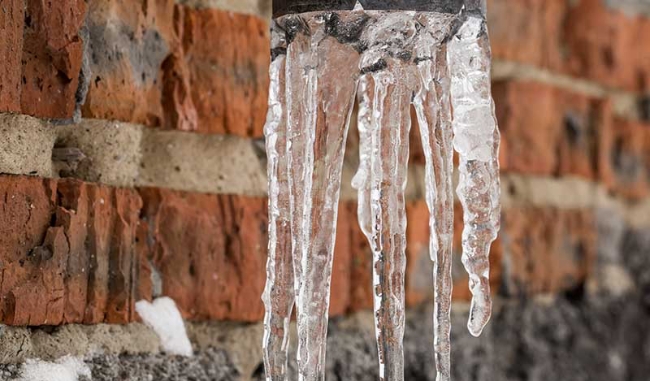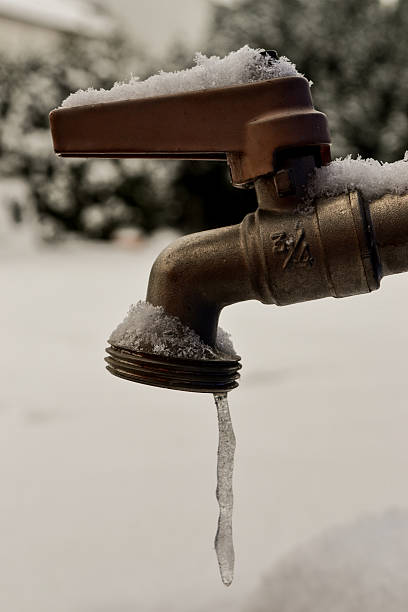Safeguarding Your Pipes from Freezing Issues: Critical Strategies
Safeguarding Your Pipes from Freezing Issues: Critical Strategies
Blog Article
We have found this great article on Helpful Tips to Prevent Frozen Pipes this Winter directly below on the internet and accepted it made perfect sense to talk about it with you here.

Winter can ruin your plumbing, specifically by freezing pipelines. Here's how to prevent it from happening and what to do if it does.
Introduction
As temperatures decline, the threat of frozen pipes boosts, possibly leading to pricey fixings and water damage. Recognizing just how to prevent frozen pipes is critical for home owners in chilly environments.
Comprehending Frozen Pipelines
What causes pipelines to freeze?
Pipelines freeze when revealed to temperatures listed below 32 ° F (0 ° C) for extended durations. As water inside the pipelines freezes, it broadens, putting pressure on the pipe wall surfaces and possibly triggering them to break.
Threats and damages
Frozen pipelines can lead to water system disturbances, residential property damages, and expensive repair work. Burst pipelines can flooding homes and create considerable architectural damages.
Indicators of Frozen Pipes
Identifying frozen pipelines early can stop them from breaking.
Just how to recognize icy pipes
Search for decreased water flow from taps, uncommon odors or noises from pipelines, and noticeable frost on subjected pipes.
Avoidance Tips
Protecting susceptible pipes
Cover pipes in insulation sleeves or use warmth tape to shield them from freezing temperature levels. Focus on pipes in unheated or outside areas of the home.
Heating techniques
Maintain indoor areas properly heated, particularly areas with plumbing. Open cupboard doors to permit warm air to distribute around pipelines under sinks.
Safeguarding Exterior Plumbing
Garden tubes and outdoor faucets
Detach and drain pipes garden pipes prior to winter. Set up frost-proof faucets or cover exterior taps with insulated caps.
What to Do If Your Pipes Freeze
Immediate actions to take
If you think frozen pipes, keep faucets available to eliminate stress as the ice thaws. Utilize a hairdryer or towels taken in hot water to thaw pipes slowly.
Long-Term Solutions
Structural adjustments
Take into consideration rerouting pipelines far from exterior walls or unheated locations. Include additional insulation to attics, cellars, and crawl spaces.
Updating insulation
Invest in top quality insulation for pipelines, attic rooms, and walls. Correct insulation assists maintain regular temperatures and reduces the danger of frozen pipelines.
Conclusion
Avoiding icy pipes calls for aggressive steps and fast responses. By recognizing the causes, indications, and safety nets, house owners can shield their plumbing during winter.
6 Proven Ways to Prevent Frozen Pipes and Protect Your Home
Disconnect and Drain Garden Hoses
Before winter arrives, start by disconnecting your garden hoses and draining any remaining water. Close the shut-off valves that supply outdoor hose bibs and leave the outdoor faucet open to allow any residual water to drain. For extra protection, consider using faucet covers throughout the colder months. It’s also important to drain water from any sprinkler supply lines following the manufacturer’s directions.
Insulate Exposed Pipes
Insulating your pipes is an effective way to prevent freezing. Pipe insulation is readily available at home improvement stores and is relatively inexpensive. Pay close attention to pipes in unheated areas such as the attic, basement, crawl spaces, or garage. Apply foam insulation generously to create a buffer against the cold. You can also wrap your pipes in heat tape or thermostat-controlled heat cables for added warmth.
Seal Air Leaks
Inspect your home for any cracks or openings that could let in cold air. Seal any holes around the piping in interior or exterior walls, as well as the sill plates where your home rests on its foundation. Additionally, make sure to keep your garage door closed unless you’re entering or exiting. Leaving it open creates a significant air leak that can lead to frozen pipes.
Allow Warm Air Circulation
During cold snaps, it’s essential to allow warm air to circulate evenly throughout your home. Leave interior doors ajar to promote better airflow. Open kitchen and bathroom cabinets to help distribute heat consistently around the rooms. If you have small children or pets, be sure to remove any household chemicals or potentially harmful cleaners from open cabinets for safety.
Let Faucets Drip
A small trickle of water can make a big difference in preventing ice formation inside your pipes. When temperatures drop significantly, start a drip of water from all faucets served by exposed pipes. This continuous flow helps prevent the water from freezing. Additionally, running a few faucets slightly can relieve pressure inside the pipes, reducing the chances of a rupture if the water inside does freeze.
https://choateshvac.com/6-proven-ways-to-prevent-frozen-pipes-and-protect-your-home/

We had been brought to that editorial on How to prepare your home plumbing for winter weather through a buddy on a different domain. Do you know about somebody who is curious about the niche? Do not hesitate to share it. Thanks a lot for going through it.
Source Report this page